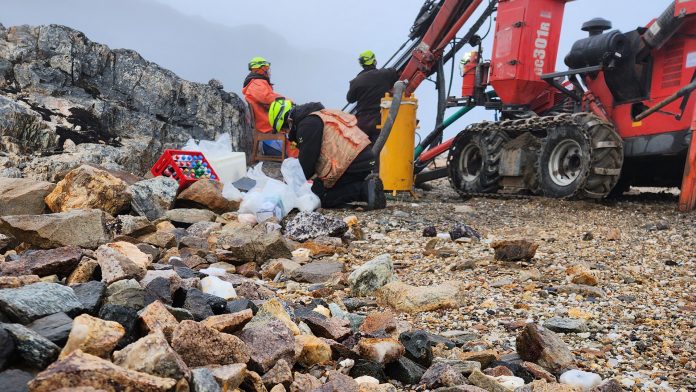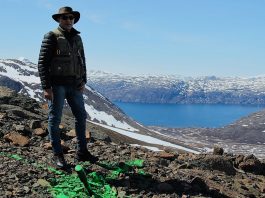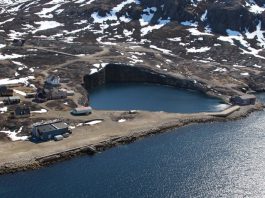Australian-based exploration company Eclipse Metals (ASX: EPM | FWB: 9EU) is in the testing and analysis phase of exploring a project in Southwest Greenland, hosting promising potential for multi-commodity mineralisation.
Having acquired the project in early 2021, Eclipse has spent two years building up its knowledge and understanding of the licence, through sampling as well as evaluating historic drill samples and data from the project’s history of mining production. Historic production at MEL2007-45 includes 3.8 million tonnes of high-grade cryolite, produced over 120 years for the aluminium industry, from the world’s largest known minable resource of naturally occurring cryolite.
The project includes two primary assets. In addition to the Ivigtût cryolite resource, Eclipse is also exploring the Grønnedal carbonatite complex. Grønnedal has multi-faceted commercial potential for rare earth elements (REE) and high-purity quartz (HPQ), lithium, siderite, and polymetallic base metals.
Commencement of Eclipse’s maiden drilling programme was an important milestone after a substantial period of planning and preparation. During the final quarter of 2022, Eclipse completed the percussion drilling and trench sampling programme across the Ivigtût and Grønnedal targets, with early results providing encouraging signs to back up the company’s exploration strategy.
There are two phases to sample analysis. Early X-ray fluorescence (XRF) analysis conducted on composite samples returned encouraging results, including strong values for ratios of rare earth elements praseodymium (Pr) and neodymium (Nd). XRF results were achieved before a five-tonne sample was shipped to a laboratory in Australia for comprehensive analysis, which is the second phase of sample analysis. These laboratory results will provide stronger confirmation of results and are due in early 2023.
Grønnedal carbonate returns strong ratios in XRF analysis
Pairing the preliminary results with historical assay samples will provide a more accurate and informed estimate than was previously possible. At the sample preparation facility in Greenland, the preliminary XRF readings returned an intersection average of 7.5m at 0.8% La2O3+Ce2O3+Pr2O3+Nd2O3 (4REO), with praseodymium (Pr)/lanthanum (La) and neodymium (Nd)/cerium (Ce) ratios of about 1.2:1, as well as 0.49% Zn+Pb+Ni.
The role of the comprehensive laboratory result is to produce definitive values, so this analysis is yet to be confirmed for rare earth elements and base metals as well as other major and trace elements. Still, Eclipse’s interpretation of the preliminary results finds that the commercially more valuable REEs (Pr and Nd) are significantly enriched in drill hole L3-9 relative to lower value La and Ce. These observations are consistent with academic studies and previous laboratory results.

In comparison to other renowned REE-mineralised carbonatite complexes, Grønnedal indicates an unusual Pr/La and Nd/Ce ratio pattern as derived from the rock chip samples. The Grønnedal complex is likely to consist of lower La and Ce contents, with potentially a higher proportion of magnetic rare earth elements, Pr and Nd, which are more commercially valuable.
Pr and Nd are used for high-performance magnets, heavily relied on in the automotive and renewable energy sectors. Given the vitality and necessity of the industries, demand for these elements is not only high now but remains promising for the future.
Eclipse’s Grønnedal portable X-ray Fluorescence (pXRF) readings and early laboratory assay results showed large proportions of Pr and Nd, measuring up to 55% of the REE components. For reference to other REE-mineralised carbonatite complexes, Mountain Pass in California measures about 17% and Western Australia’s Mount Weld records 25%, which estimates strong commercial potential for Grønnedal.
To confirm the basket price of the project, laboratory results and true compositions will need to be confirmed through laboratory results. It is likely that the difference in composition of the Grønnedal project will have a positive influence on the basket price.
Mineralised waste dump sampling at Ivigtût

At the Ivigtût target, Eclipse has bulk sampled five mineralised waste dumps from the historical cryolite mine. These dumps are known to possess a high volume of mineralised material suitable to recover saleable products, and the company has assessed the ROM-sized waste dumped for mineral and chemical content. From previous laboratory assessments, Ivigtût is defined with polymetallic nature of mineralisation in the pit produced from the large volume of mineralised waste.
Currently, Eclipse has multiple sources of information and data to define and assess the resources. The previous surface sample (I21012) provided encouraging results of 165g/t silver, 0.15% copper, 3.83% lead and 0.37% zinc, along with a laboratory assessment of a historical drill core sample (IVT 21 – 11(1)) which returned a result of 9.86% zinc.
The mineralised waste dumps provided low total rare earth oxide (TREO) values from the laboratory results, ranging from 2.26ppm to 161.44ppm. While this is not the most favourable result, the ratio of high-demand heavy to light rare earth elements is much more favourable. The bulk samples shipped to Australia for chemical and petrological assessment will allow the company to determine an accurate commercial potential estimate, which is currently considered highly encouraging.
Calculations of the open pit at the Ivigtût precinct estimated that two to five million tonnes of run of mine (ROM) waste were deposited in the dumps, as well as for landfill purposes, during a century of mining. This was determined using the size of open pit and access tunnels and subtracting the cryolite concentrate that has been exported. In addition, Eclipse is considering a Ground Penetrating Radar (GPR) survey to assist the calculations in measuring the potential volume of mineralised waste mineral.
Project positioned for development
The Ivigtût mine was first explored in 1865, which resulted in the high-volume production of cryolite that powered the aluminium industry at the time. Eclipse is the first company to re-engage in development of this resource deposit and, in conjunction with the Grønnedal carbonate complex, the company can capitalise on high potential from historical production as well as the advantageous infrastructure in situ.

Ivigtût benefits from a strategic location close to necessary infrastructure. The site can be serviced through a power station and fuel supplies with local road infrastructure to support mineral exploration activities. While the true potential of the project will not be realised until laboratory results from samples shipped to Australia are released, preliminary samples from both sites and historical results at Ivigtût show promising signs for a new phase of development and mining.
Please note, this article will also appear in the thirteenth edition of our quarterly publication.









